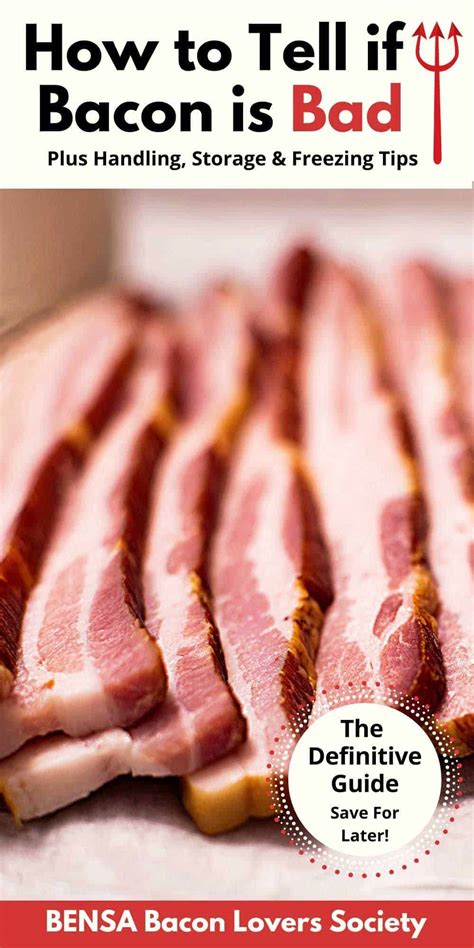How to Know if Your Bacon is Bad: A Guide to Safe Eating
Bacon. The crispy, salty, smoky delight that graces breakfast plates and elevates countless dishes. But how do you know when this beloved breakfast staple has gone bad? Knowing the signs of spoiled bacon is crucial for food safety and preventing foodborne illnesses. This guide will walk you through everything you need to know to ensure your bacon is safe to eat.
Visual Clues: What to Look For
The first line of defense against bad bacon is your eyes. Here's what to check:
Color Changes:
- Acceptable: Fresh bacon usually has a pinkish-red hue, sometimes with streaks of white fat.
- Spoiled: Bacon that has turned grayish, greenish, or brownish is a clear indication that it's gone bad. This discoloration points to bacterial growth. Discard immediately.
Slime or Stickiness:
- Acceptable: Bacon should feel relatively dry to the touch.
- Spoiled: Any sign of slime, stickiness, or unusual moisture on the surface of the bacon is a major red flag. This indicates bacterial contamination. Discard immediately.
Mold:
- Acceptable: Mold-free is the only acceptable condition.
- Spoiled: Any visible mold, regardless of color or location, means the bacon is spoiled and should be thrown away. Even if you cut off the moldy part, the unseen mold spores may have already permeated the rest of the bacon. Discard immediately.
Smell Test: Trust Your Nose
Your sense of smell is another powerful tool in determining bacon's freshness.
- Acceptable: Fresh bacon has a characteristic salty, smoky aroma.
- Spoiled: A sour, rancid, or unpleasant odor is a strong indicator of spoilage. If your bacon smells "off," don't risk it. Discard immediately.
Texture Check: Beyond the Sight and Smell
While visual and olfactory cues are primary, texture also provides valuable information:
- Acceptable: Fresh bacon has a firm, relatively dry texture.
- Spoiled: If the bacon feels unusually soft, mushy, or slimy, it's likely spoiled.
Storage Matters: Preventing Spoilage
Proper storage significantly impacts bacon's shelf life. Here are some tips:
- Refrigeration: Unopened bacon should be kept in its original packaging in the refrigerator. Once opened, tightly wrap the remaining bacon in plastic wrap or place it in an airtight container to prevent it from drying out or absorbing odors.
- Freezing: Freezing bacon extends its shelf life considerably. Wrap it tightly in freezer-safe plastic wrap or aluminum foil, or place it in a freezer bag to prevent freezer burn. Frozen bacon can last for several months.
Beyond the Basics: Understanding the "Best By" Date
The "Best By" or "Use By" date on the bacon packaging indicates when the bacon is at its peak quality. While it may still be safe to eat after this date, the flavor and texture might have deteriorated. Always err on the side of caution; if you're unsure, discard it.
Conclusion: When in Doubt, Throw it Out!
Food safety should always be your priority. When it comes to bacon, don't hesitate to discard it if you notice any signs of spoilage. The risk of foodborne illness far outweighs the cost of a few slices of bacon. By following these simple steps, you can confidently enjoy your bacon knowing it's safe and delicious.
